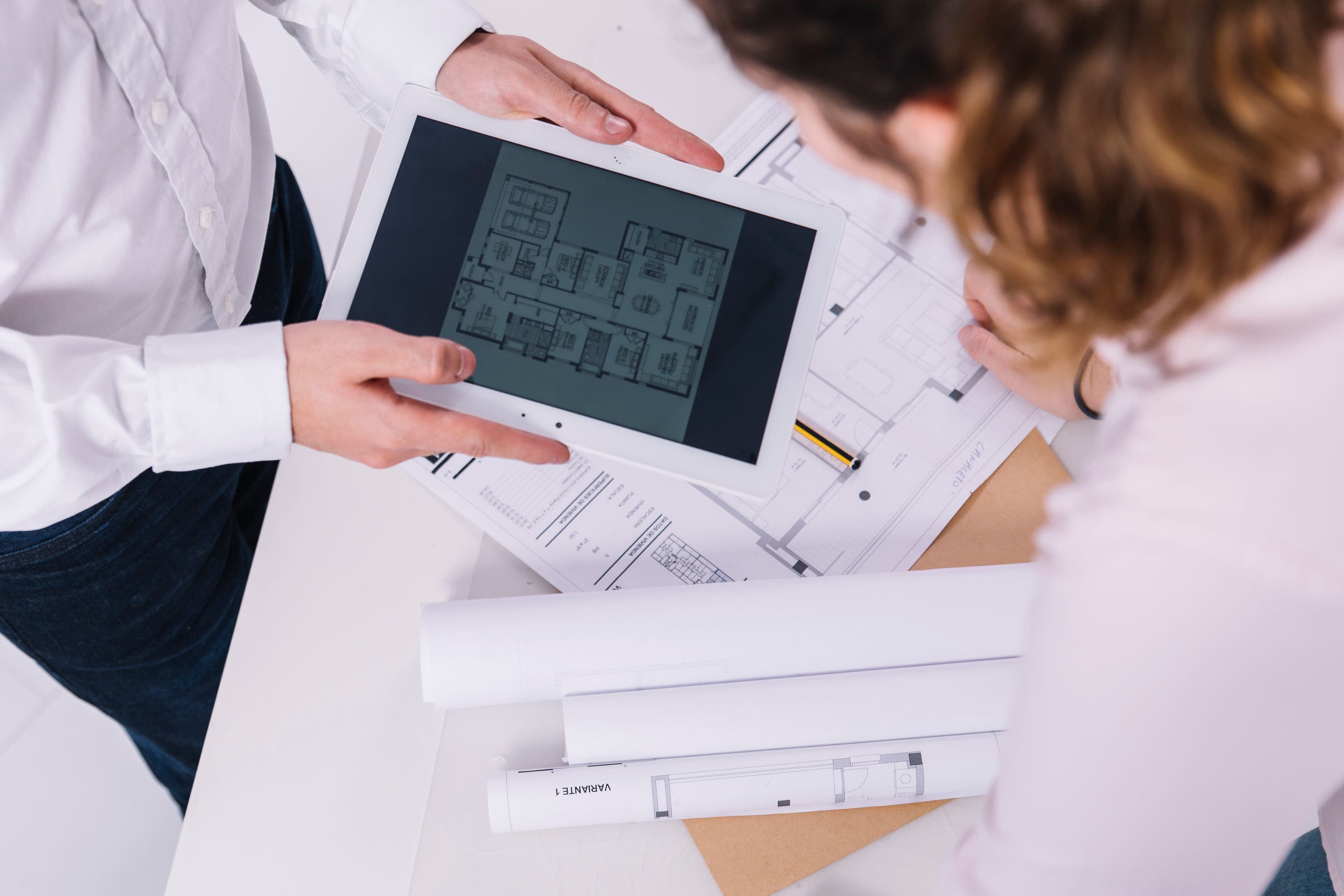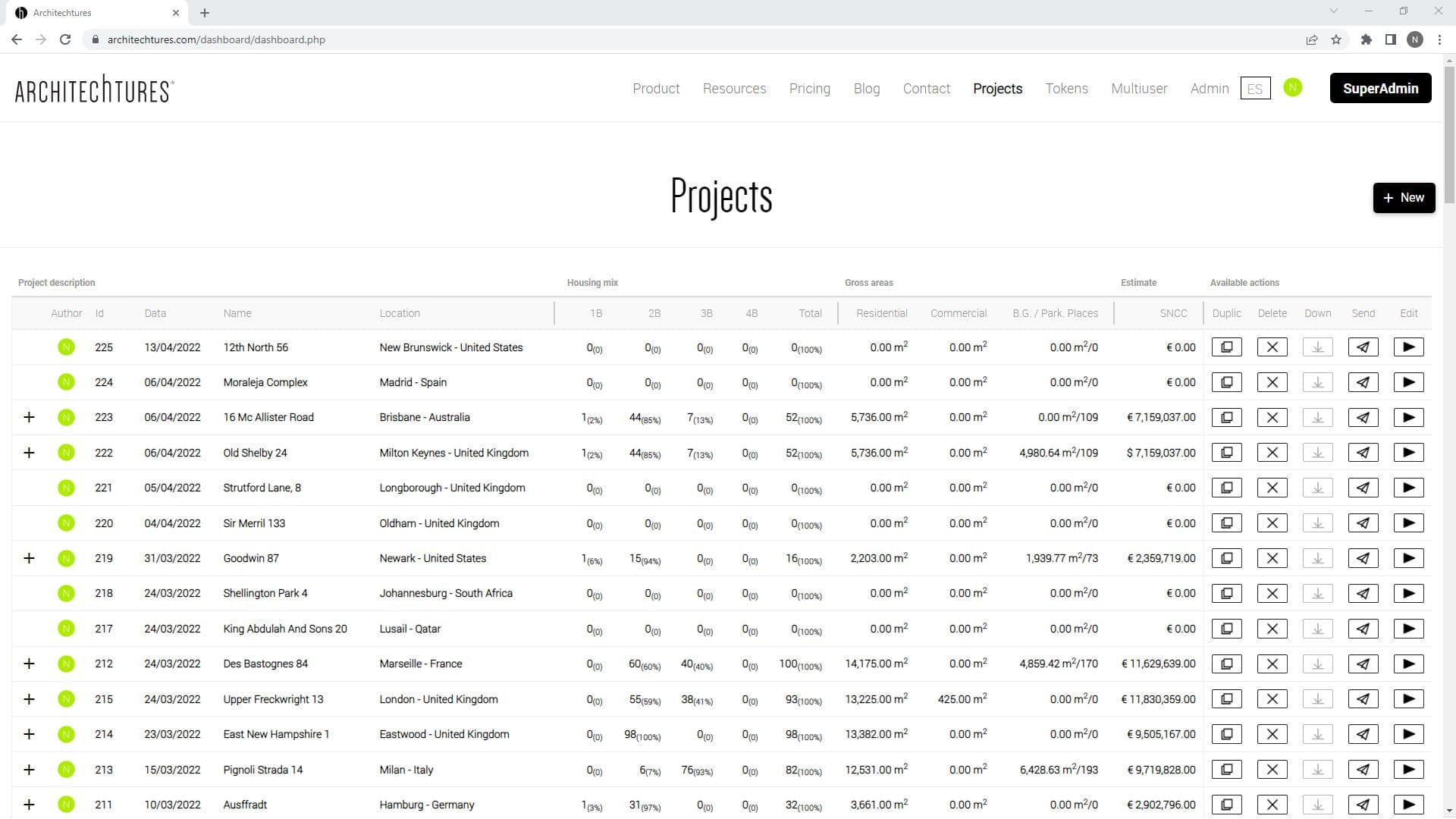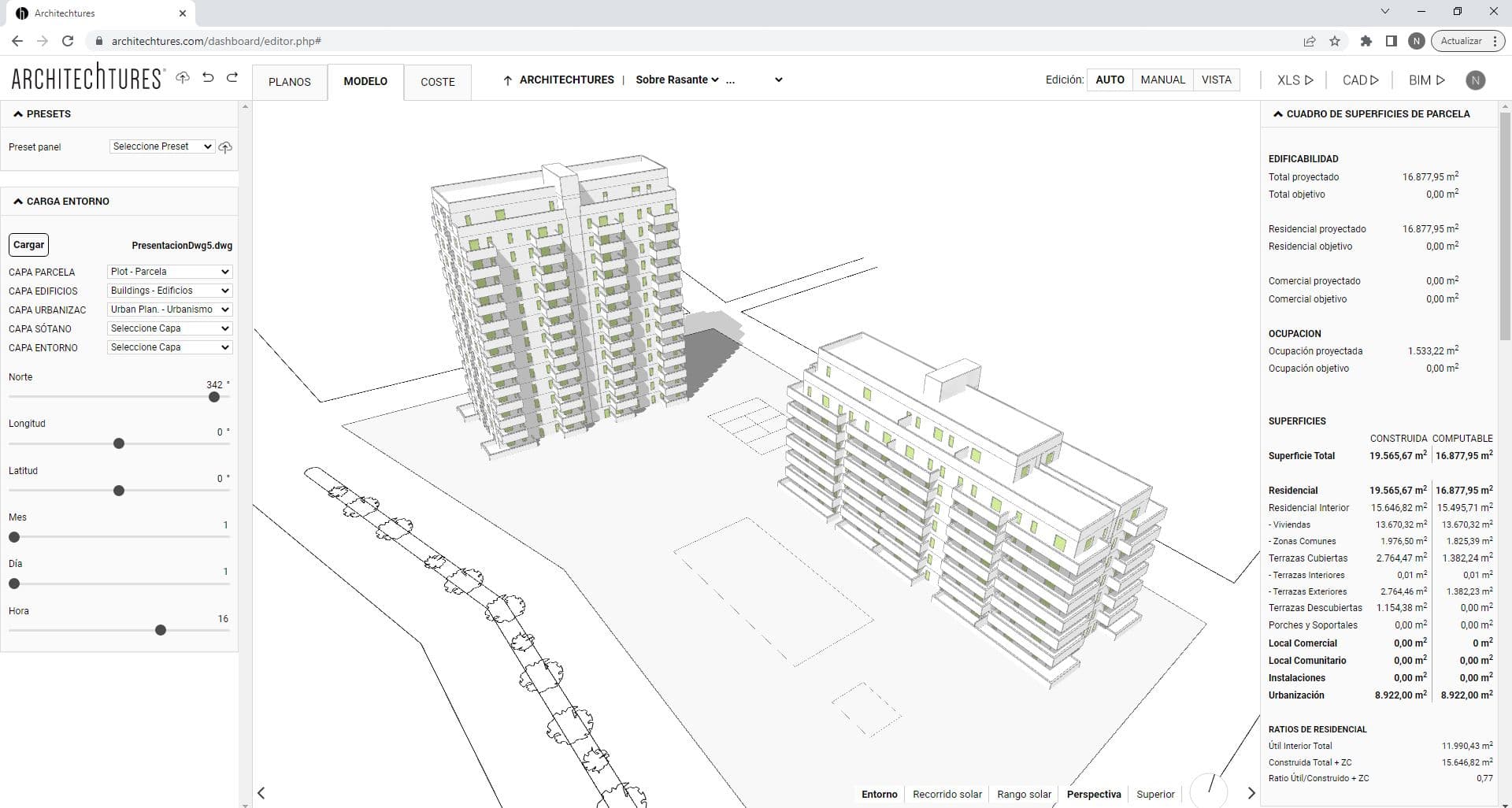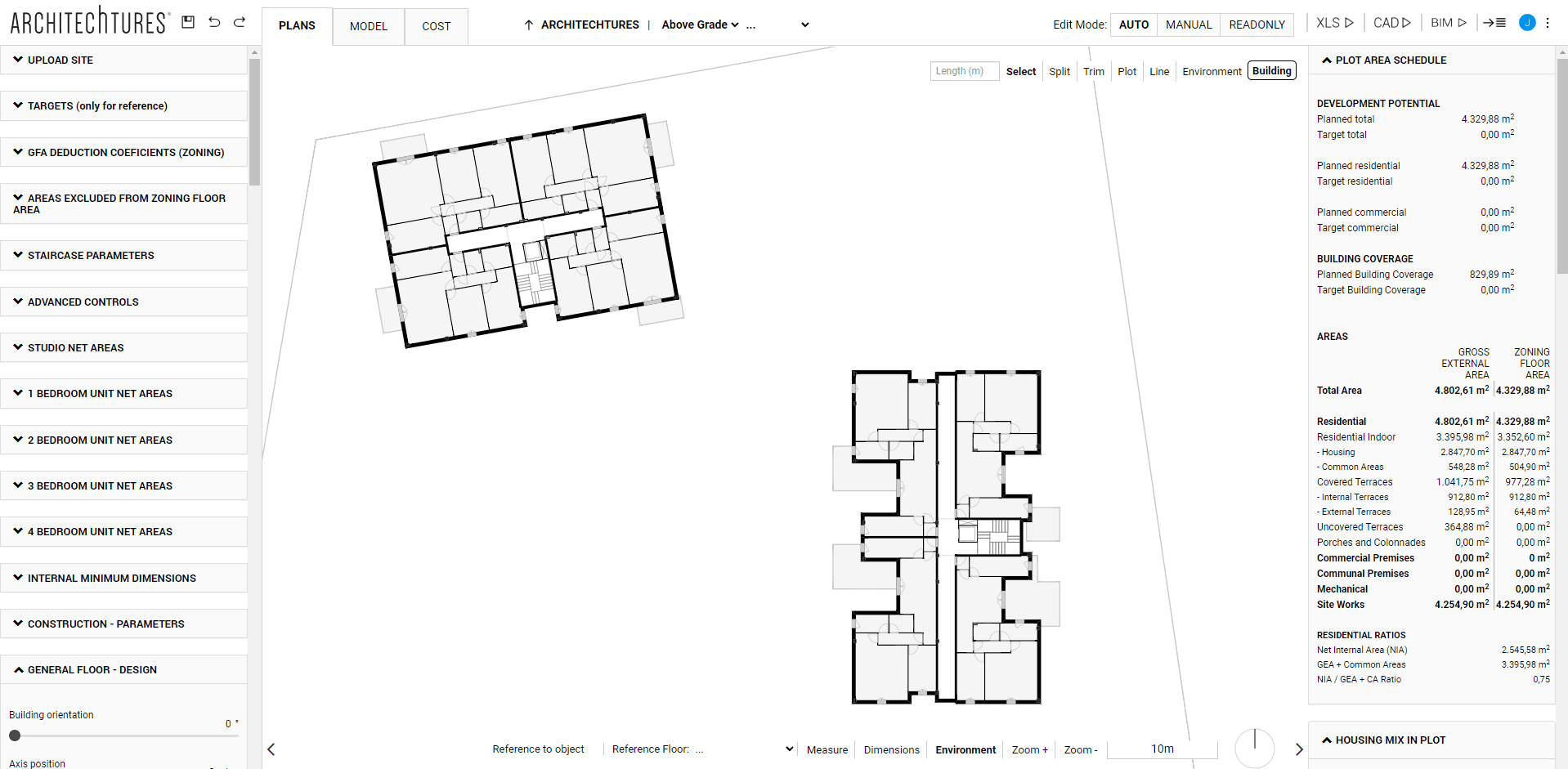Artificial Intelligence in Architecture: The Future Is Now
Posted 5/12/2025 in Resources

Discover how Artificial Intelligence in Architecture is revolutionizing design, driving sustainability, and optimizing processes.
As the architecture industry enters a new era of digital transformation, artificial intelligence in architecture is emerging as one of the most powerful and disruptive forces shaping the evolution of the built environment. It is no longer a theoretical technology or one with limited use—it is now an active tool that is redefining how architects design, collaborate, and make decisions. This comprehensive guide explores the role of AI throughout the architectural workflow, empowering professionals to embrace and lead this technological shift with confidence and creativity.
1. The rise of artificial intelligence in architecture
2. What is artificial intelligence in the context of architecture?
3. Current applications of artificial intelligence in architecture
4. How architects can prepare for the AI revolution
5. What is the architect’s role in the age of AI?
1. The rise of artificial intelligence in architecture
In recent years, artificial intelligence in architecture has evolved from a futuristic concept into a practical, transformative force that is changing the way buildings are conceived, designed, and constructed. As the architecture, engineering, and construction (AEC) industries face growing demands for faster delivery, greater efficiency, and more sustainable outcomes, AI has emerged as a powerful ally—redefining workflows, expanding creativity, and opening new doors for innovation.
At its core, artificial intelligence (AI) refers to computer systems capable of performing tasks that typically require human intelligence, such as pattern recognition, decision-making, or predictive analysis. When applied to architecture, AI enables professionals to automate repetitive processes, analyze complex data sets, and generate design solutions that are both optimized and adaptable to real-world project conditions.
The relevance of AI in today’s architectural practice cannot be overstated. As projects grow more complex and sustainability becomes an essential priority, architects are turning to AI to boost productivity, reduce design errors, and meet environmental performance goals more effectively. Generative design tools, machine learning algorithms, and data-driven simulations are already integrated into many architectural platforms, helping design teams explore hundreds of iterations, simulate building performance, and make more informed decisions—all in a matter of minutes.
Moreover, the integration of AI contributes to better resource management and smarter urban development. It empowers architects not just to design buildings, but to create more resilient and adaptive spaces aligned with broader social and ecological goals.
As we begin to fully grasp the potential of artificial intelligence in architecture, one thing becomes clear: this technology is not replacing human creativity—it’s enhancing it. By taking over repetitive tasks and offering new perspectives, AI allows architects to focus on what they do best: imagining and shaping the spaces of the future.
2. What is artificial intelligence in the context of architecture?
To fully understand the impact of artificial intelligence on architecture, it’s essential to grasp what AI truly means within this professional field—and how it differs from related technologies such as machine learning and generative design.
Defining AI in Architecture
Artificial intelligence in architecture involves the use of algorithms and computer systems capable of analyzing data, recognizing patterns, and making decisions with minimal human intervention. These systems are increasingly being integrated into architectural tools to improve design workflows, predict outcomes, and generate optimized alternatives.
The Royal Institute of British Architects (RIBA) offers a broader definition, describing AI as a transformative technology that enhances an architect’s decision-making capabilities. RIBA emphasizes that the role of AI is not to replace human input, but to complement it—supporting creativity, reducing risk, and promoting more sustainable and inclusive design outcomes.
AI in architecture refers to intelligent computational systems that assist with or automate parts of the design, planning, and construction process—driven by data and continuously learning from feedback and results.
AI vs. Machine Learning vs. Generative Design
These three terms are often used interchangeably, but they have distinct meanings and roles within the architectural workflow:
- Artificial Intelligence (AI): A broad field encompassing any system capable of mimicking human cognitive functions such as problem-solving, learning, or decision-making. In architecture, AI can include anything from automatic clash detection in BIM software to design assistants that suggest spatial configurations.
- Machine Learning: A subfield of AI focused on systems that learn from data over time. In architecture, it is used to predict a building’s energy performance based on historical data or to analyze user behavior to enhance space planning.
- Generative Design: A technique that uses AI and machine learning to explore thousands of design variations based on user-defined goals and constraints (e.g., solar exposure, material costs, structural integrity). This approach produces optimized solutions that often surpass what human designers might consider.
Key applications in the architectural workflow
AI isn’t just a buzzword—it’s reshaping how architecture firms tackle challenges and seize opportunities. Some of its most impactful applications include:
- Data Analysis and Pattern Recognition: AI systems can quickly analyze site data, zoning regulations, environmental conditions, and user preferences to support early-stage design decisions.
- Design Optimization: Algorithms that refine spatial layouts for maximum efficiency—balancing factors such as natural light access, energy consumption, circulation flow, and material usage. This ensures each design iteration is backed by performance metrics.
- Behavior Prediction: AI-driven simulations forecast how a building will perform under real-world conditions. This includes energy usage, thermal comfort, or acoustic behavior—enabling proactive improvements before construction even begins.
These capabilities make artificial intelligence in architecture not just a tool for automation, but a strategic ally in creating smarter, more efficient, and more sustainable built environments.
3. Current applications of artificial intelligence in architecture
Artificial intelligence is rapidly becoming an integral part of the architectural workflow, offering tangible solutions to some of the industry's most persistent challenges. From early-stage conceptual design to energy modeling and construction coordination, AI-powered tools are transforming how architects think, work, and deliver value.
3.1 Conceptual design and planning
In the early phases of a project, AI-enhanced tools assist architects in turning basic data into concrete design decisions. This includes generating spatial layouts based on programmatic requirements, site conditions, and zoning constraints—commonly known as “test-fit scenarios.”
One of the most advanced platforms in this field is ARCHITEChTURES, which enables the creation of automated, parametric design proposals based on user-defined inputs. The system analyzes variables such as usable area, building typologies, functional relationships, and zoning regulations to produce real-time optimized layouts—accelerating decision-making in feasibility and schematic design stages.
Additionally, ARCHITEChTURES incorporates sustainability metrics, cost control, and generates BIM-compatible documentation, making it a smart co-pilot for architectural planning from day one.
3.2 Generative design and parametric modeling
Generative design is one of the most transformative applications of artificial intelligence in architecture. This approach uses algorithms to explore multiple design permutations, evaluating each based on defined objectives such as structural integrity, material efficiency, or occupant comfort.
Platforms like ARCHITEChTURES are leading this evolution by allowing architects to define spatial, functional, and regulatory parameters and instantly generate optimized design solutions that balance technical feasibility, sustainability, and spatial efficiency. Unlike more technical or rigid tools, ARCHITEChTURES offers an intuitive, flexible interface that supports fast iteration and creative control.
In short, tools like ARCHITEChTURES show how AI can amplify architectural creativity, reduce iteration time, and ensure that every proposal aligns with measurable outcomes and project goals.
3.3 Energy efficiency and performance prediction
Sustainability is no longer optional—it’s a core requirement of contemporary architectural design. In this context, AI has become a key predictive tool, allowing architects to assess energy performance and environmental impact from the earliest stages of a project.
Platforms like ARCHITEChTURES integrate features that let users visualize sustainability metrics in real time as they explore different design configurations. Its AI engine optimizes elements such as orientation, natural lighting, cross ventilation, and space distribution, taking into account environmental variables that directly impact energy consumption and user comfort.
These capabilities enable data-driven design adjustments, reducing the building’s carbon footprint, improving operational efficiency, and supporting compliance with green certifications like LEED or BREEAM.
By incorporating AI performance analysis in the conceptual phase, tools like ARCHITEChTURES give architects a vital predictive edge to make more informed, responsible, and climate-aligned decisions.
3.4 Risk analysis and decision support
AI isn’t limited to design—it also enhances project execution by identifying risks and conflicts before they arise. Predictive modeling systems can simulate construction processes, anticipate potential delays, and detect design clashes—especially in complex, multidisciplinary BIM environments.
For instance, AI algorithms can scan clash detection data across disciplines (architecture, structural, MEP) and classify issues by severity and impact. This improves coordination efficiency and reduces costly errors on site.
Decision support systems enable real-time scenario analysis using historical data, cost benchmarks, and scheduling metrics. Architects and project managers can use this information to plan more accurately and allocate resources more effectively.
3.5 Automation of repetitive tasks
One of the most obvious benefits of artificial intelligence is its ability to automate time-consuming, repetitive tasks—freeing up architects to focus on the strategic and creative aspects of design.
Platforms like ARCHITEChTURES include features that fully automate processes such as:
- Generating spatial layouts based on regulatory, functional, and dimensional parameters.
- Automatically calculating key metrics like usable area, buildable area, unit count, or efficiency ratios.
- Real-time updating of design variants, allowing instant adjustments and documentation.
- Direct export to BIM formats (e.g., IFC), accelerating integration into technical workflows.
This kind of automation eliminates manual tasks such as redrawing plans after every iteration, recalculating zoning formulas, or continuously updating documentation. As a result, teams can deliver projects faster, with fewer errors and greater traceability—reducing operational costs without sacrificing design quality.
From idea generation to construction readiness, today’s applications of artificial intelligence in architecture are broad, evolving, and deeply practical.

4. How architects can prepare for the AI revolution
The rapid rise of AI in architecture is not only transforming the tools; it’s reshaping the profession itself. To thrive in this new paradigm, architects must go beyond passive adoption and proactively adapt their skills, roles, and mindset to a digitally-enhanced future. Here are the key strategies to prepare for this revolution and stay at the forefront of innovation:
4.1 Training and continuous learning
As AI tools become more integrated into the design process, architects need to build a solid understanding of how these systems work and how to use them effectively. This doesn’t necessarily mean becoming data scientists or programmers, but it does require:
- Learning the fundamentals of algorithmic and generative design.
- Understanding data literacy, including how datasets influence outcomes.
- Familiarizing themselves with digital tools for automated design and planning.
- Participating in courses on parametric modeling, AI ethics, or computational design.
Many institutions, including the Royal Institute of British Architects (RIBA) and online platforms like Coursera, LinkedIn Learning, and Autodesk University, already offer specialized AI training for the AEC sector.Adopting a mindset of lifelong learning will enable architects to stay agile in the face of a constantly evolving technological landscape.
4.2 Collaboration with data and technology experts
Modern architecture projects increasingly require multidisciplinary collaboration. AI systems rely on clean data inputs, algorithm calibration, and result validation—tasks that traditionally are not part of architectural training.
Collaborate with:
- Data scientists (to manage and interpret datasets)
- Software engineers (to adapt AI tools to specific workflows)
- Sustainability consultants and urban analysts (to enhance AI-driven simulations)
Forward-thinking firms are already forming hybrid teams that combine design expertise with data-driven intelligence to deliver faster, more accurate, and valuable results.
With the proliferation of AI platforms on the market, architects must become critical evaluators of tools. Not all software labeled as “AI-powered” offers real value; some rely on opaque logic or biased datasets.
Before adopting any AI tool, it’s important to ask:
- Does this tool align with our design philosophy and workflow?
- Can we understand and validate the logic behind its results?
- Is it interoperable with existing software like Revit, Rhino, or ArchiCAD?
- What data privacy and transparency policies does it have?
A strategic adoption of tools ensures that AI enhances creativity, rather than limiting it.
4.3 Evolution of roles in the creative process
The role of the architect is expanding. With AI handling routine tasks, architects can regain time for higher-value activities: conceptual thinking, cultural interpretation, spatial narrative, and ethical oversight.
Some emerging roles in architecture include:
- Design Technologist: Connects design intent with algorithmic logic.
- AI Integrator: Customizes and implements AI tools throughout the project.
- Data-Informed Designer: Uses simulations, user data, and performance analysis to shape better spaces.
Far from diminishing the value of architects, AI offers a platform to redefine their creative identity—more as curators of intelligence than mere draftspeople of buildings.
Preparing for the AI revolution isn’t just about adopting new software, but evolving professionally, ethically, and creatively. By investing in new skills, fostering interdisciplinary collaboration, and critically engaging with technology, architects can lead the transformation—not just react to it.
AI in architecture doesn’t mark the end of design—it’s a new beginning.
5. What is the architect’s role in the age of AI?
The integration of artificial intelligence into architecture is not a future scenario—it’s today’s reality. As we've seen throughout this analysis, AI is already transforming architectural workflows: from generating design alternatives and predicting building performance to enhancing visualization and automating documentation.
These innovations bring measurable benefits:
- Faster project delivery through automation
- Higher quality and performance through data-driven design
- Increased sustainability via predictive analysis
- Better-informed decisions through AI-assisted simulations
At the same time, the architect’s role is evolving—from being solely a space designer to becoming a strategic integrator of intelligence, a curator of values, and a guardian of ethics in an increasingly digital process.
To embrace this new era, architects must:
- Explore the possibilities AI offers in their daily practice
- Invest in learning tools, concepts, and collaborative methodologies
- Integrate AI critically, choosing technologies aligned with their vision and values
The future of architecture isn’t about replacing the human touch—it’s about amplifying it. With the right mindset and solid preparation, architects can fully harness the power of AI to design smarter, more sustainable, and more meaningful environments.
Now is the time to get involved, adapt, and lead.


